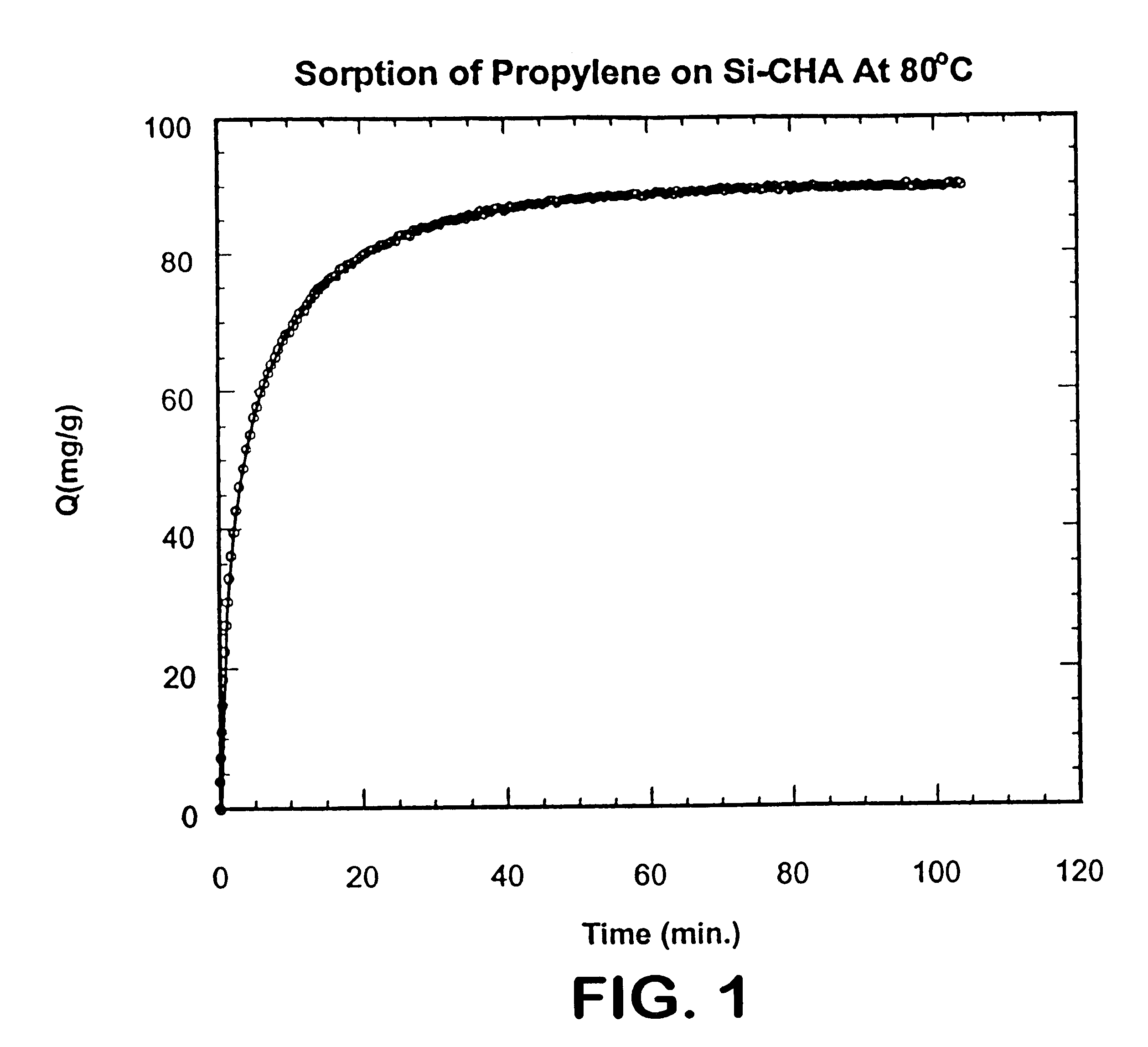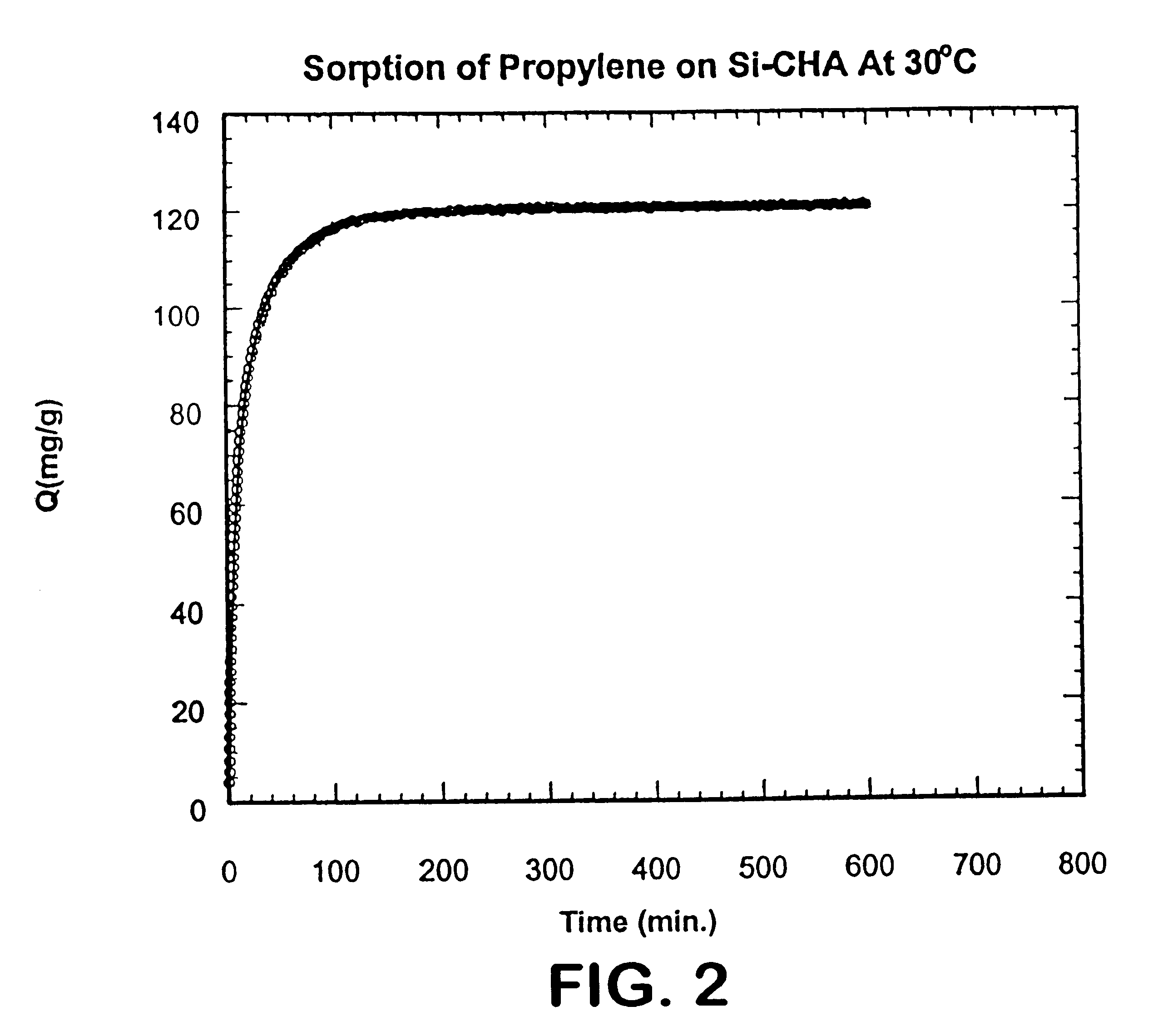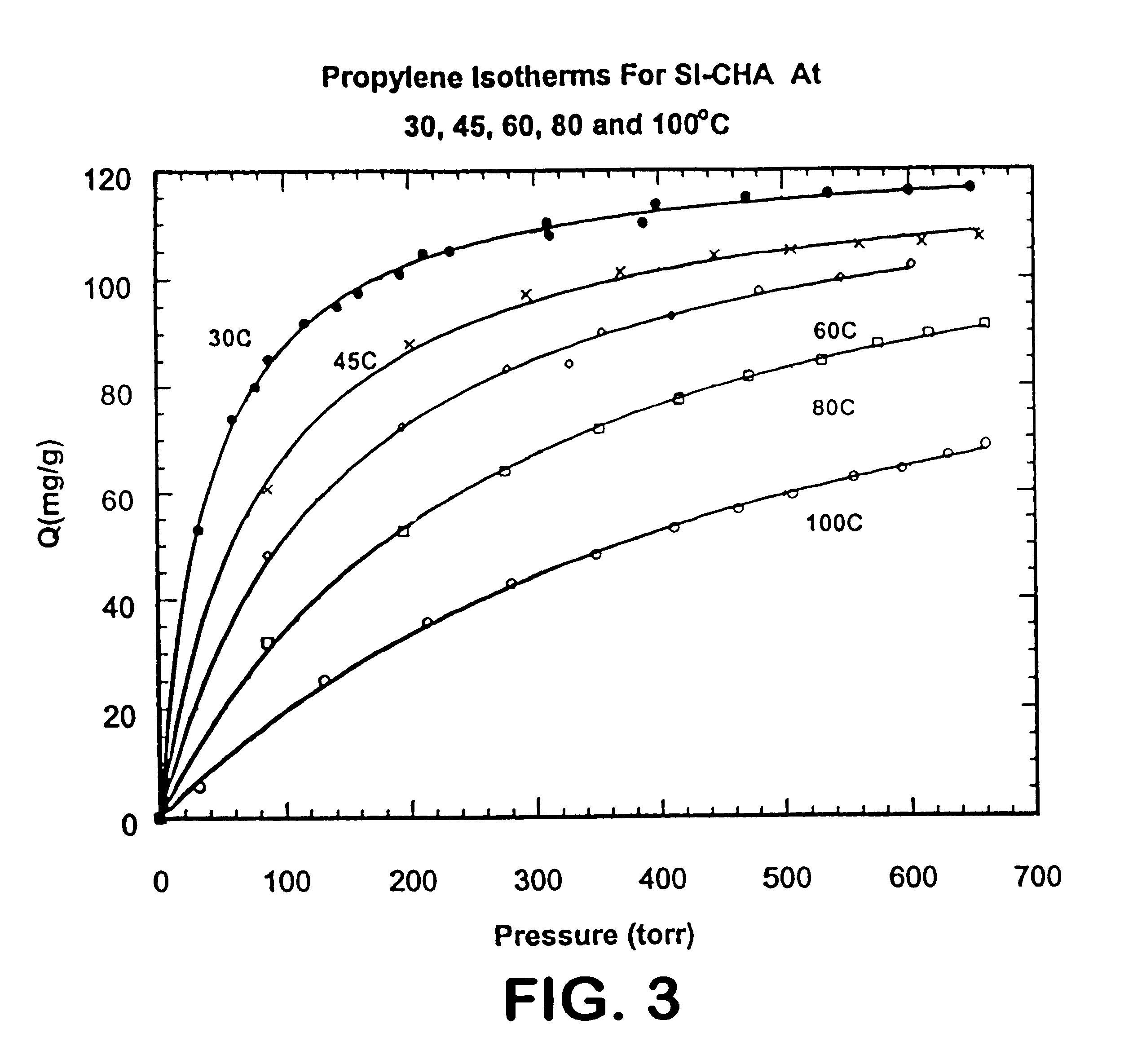Light hydrocarbon separation using 8-member ring zeolites
a technology of light hydrocarbon and zeolites, which is applied in the direction of separation process, organic chemistry, dispersed particle separation, etc., can solve the problems of large energy input, high reflux ratio of associated hydrocarbon, and inability to dispose of waste hydrocarbon streams in flare systems
- Summary
- Abstract
- Description
- Claims
- Application Information
AI Technical Summary
Benefits of technology
Problems solved by technology
Method used
Image
Examples
example 1
Si--CHA zeolite having an 8-member ring CHA type structure, having substantially equidimensional crystals ranging in size from 1 to 12 microns and having a dry composition of 100% SiO.sub.2 was employed. The Si--CHA zeolite was contacted with propylene at a pressure of 600 torr at 80.degree. C. until equilibrium was obtained. At equilibrium, this zeolite adsorbed 90 milligrams propylene per gram of zeolite. The rate of adsorption, defined as D / r.sup.2 (wherein D is diffusion and r is radius of zeolite crystal), was measured over time and calculated as 1.5.times.10.sup.-3 sec.sup.-1. The amount of propylene adsorbed in milligrams per gram of zeolite over time is shown in FIG. 1.
example 2
The Si--CHA zeolite employed in EXAMPLE 1 was contacted with propylene at 600 torr pressure at 30.degree. C. until an equilibrium was obtained. At equilibrium, the zeolite adsorbed 120 milligrams propylene per gram of zeolite. The rate of adsorption, D / r.sup.2, was 4.6.times.10.sup.-4 sec.sup.-1. The adsorption rate for propylene in milligrams per gram of zeolite, is shown in FIG. 2.
example 2a
Isotherms for the adsorption of propylene by the Si--CHA zeolite at 30.degree. C., 45.degree. C., 60.degree. C., 80.degree. C. and 100.degree. C., were measured. The results are shown in FIG. 3.
PUM
| Property | Measurement | Unit |
|---|---|---|
| adsorption capacity | aaaaa | aaaaa |
| adsorption capacity | aaaaa | aaaaa |
| size | aaaaa | aaaaa |
Abstract
Description
Claims
Application Information
 Login to View More
Login to View More - R&D
- Intellectual Property
- Life Sciences
- Materials
- Tech Scout
- Unparalleled Data Quality
- Higher Quality Content
- 60% Fewer Hallucinations
Browse by: Latest US Patents, China's latest patents, Technical Efficacy Thesaurus, Application Domain, Technology Topic, Popular Technical Reports.
© 2025 PatSnap. All rights reserved.Legal|Privacy policy|Modern Slavery Act Transparency Statement|Sitemap|About US| Contact US: help@patsnap.com



